DAY 1 - BARI
Benvenuti in Italia, welcome to Italy.
Bari, an important religious and commercial centre defined as "the door to the East", presents a significant ancient town centre in terms of historical and urban heritage. The city's mild climate makes it a top-rated destination, with many tourist and cultural attractions and numerous beaches. The city has ancient origins and takes its name from the Greek Barion; it was a Roman municipality taken over in later times by Byzantines and Swabians, which became the heart of Italian orthodox Catholicism and a place of pilgrimage for the three monotheistic religions during the Middle Ages. One of its many symbols is, in fact, the Basilica di San Nicola (St. Nicholas), which was erected in the heart of the old city in Romanesque style towards the end of 1200 to house the relics of St. Nicholas, which according to tradition were stolen by devout sailors from the city of Myra (now Turkey) and brought to Bari in 1087. Another Romanesque building showing a majestic rose window is the Cathedral of San Sabino. In contrast, different styles characterize the following impressive buildings: the Palace of the Apulian aqueduct, Palazzo Mincuzzi, both in an eclectic style, Palazzo Fizzarotti, whose three floors are in Venetian style, and the 19th-century neoclassical Palazzo de Gemmis. The coast around Bari is dotted with several medieval towers built for defensive purposes against the Saracen pirates. However, the most important defensive construction is still that of the Norman-Swabian castle and its long wall surrounding the old city, which dates back to the twelfth century. Evenings are given over to strolling along the promenade in the mild climate, followed by a visit to one of the many restaurants in the city centre offering local dishes of raw fish and “poor” cuisine centred on “orecchiette” pasta. Alternatively, try one of the many places offering a typical aperitif accompanied by “tarallucci” (savoury round pretzels) and “friselle” (a ring-shaped hard bread that requires dipping in water).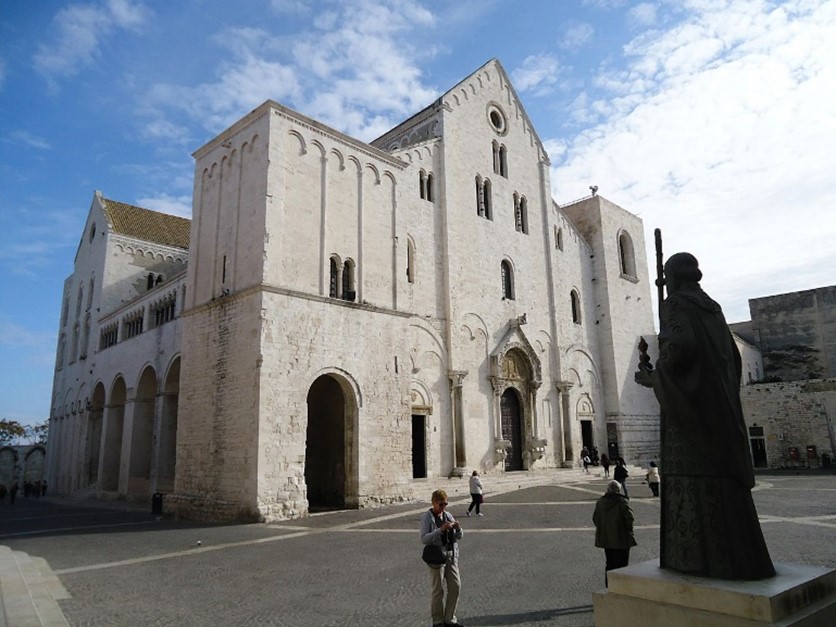
DAY 2 – CASTEL DEL MONTE
Recognized as a World Heritage Site in 1996, Castel del Monte is a brilliant example of medieval architecture located on a hill in the Murge area. Commissioned by the eclectic and cultured Frederick II, Duke of Swabia, Emperor of the Sacred Roman Empire, the Castle is an exceptional work for the perfection of its forms and the fusion of cultural elements from different periods and places. The Lions at the monumental entrance are typical of Romanesque art, while the friezes that decorate some parts of the castle belie Classical inspiration. And the floor's design and materials are partly reminiscent of Islamic art. The number 8 is the principal factor in the castle's plan: 8 sides of the castle, 8 rooms on the ground floor and first floor, arranged to form an octagon, and 8 the massive octagonal towers.
It is still unclear what led Frederick II to build this brilliant piece of architecture. An air of mystery surrounds it and is thus the fount of many legends and the charm of this unique place.
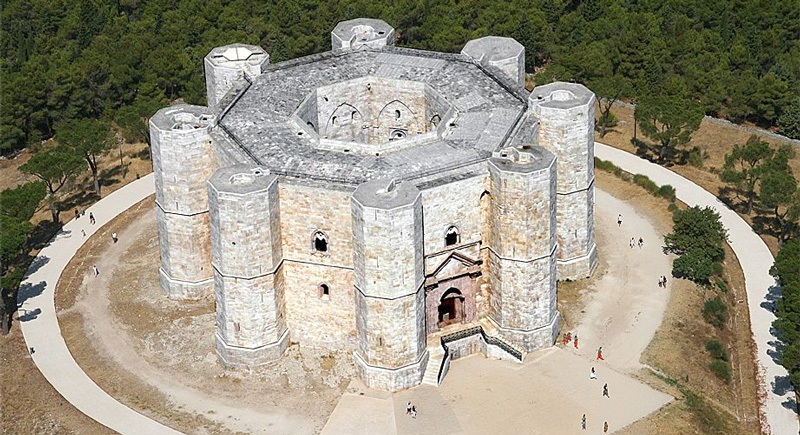
DAY 3 – MATERA
Matera is one of the oldest cities in the world, whose territory holds evidence of human settlements starting from the Paleolithic and without interruption until today. Touring Matera is like experiencing a forgotten past - you feel like setting foot in a nativity scene when you visit this charming city in Lucania. It’s no coincidence it’s referred to as “the second Bethlehem” and was the setting for Mel Gibson’s movie “The Passion” and the last James Bond, “No time to die”.
Matera is widely known as the city of the “Sassi”, the original urban nucleus, developed from the natural caves carved into the rock and subsequently modelled in increasingly complex structures.
In the 1950s, when the inhabitants who lived in the caves dug out of the mountain were forced to abandon those dwellings to settle in modern districts, no one would have ever thought that those grottos - the Sassi - would have become the symbol of a reborn city. UNESCO added the Sassi of Matera to its list of World Heritage Sites in 1993 as a whole and a millennial way of life to be preserved and handed down to our descendants. In fact, it was recognized as a model for living harmoniously with the environment while integrating with it and taking advantage of resources without disturbing the environment.
Geologists call it calcarenite, and ordinary folk refer to it as “tuff”: it’s the rock surrounding Matera that this land’s master artisans learned to work with in ancient times. This brittle, adaptable material is abundant in the mountain that dominates the city, so it seemed only natural for the people from Matera to go up there and dig out that rock to build a home. The extracted material was processed to make the façade of the dwelling. After the first home, others were constructed until the network of houses, tunnels and alleyways became that magical place called Sassi - a gigantic sculpture, a miracle of town planning!
In Matera, you’ll discover one of the most beloved Italian breads. “Pane di Matera" is a bakery product for which only hard wheat semolina and sourdough are used. The characteristics to recognize the bread of Matera are the shapes, croissant or high bread, and a straw-yellow crumb. But besides bread, you’ll not miss other local specialities such as the Caciocavallo cheese or the “Lucanica” sausage.
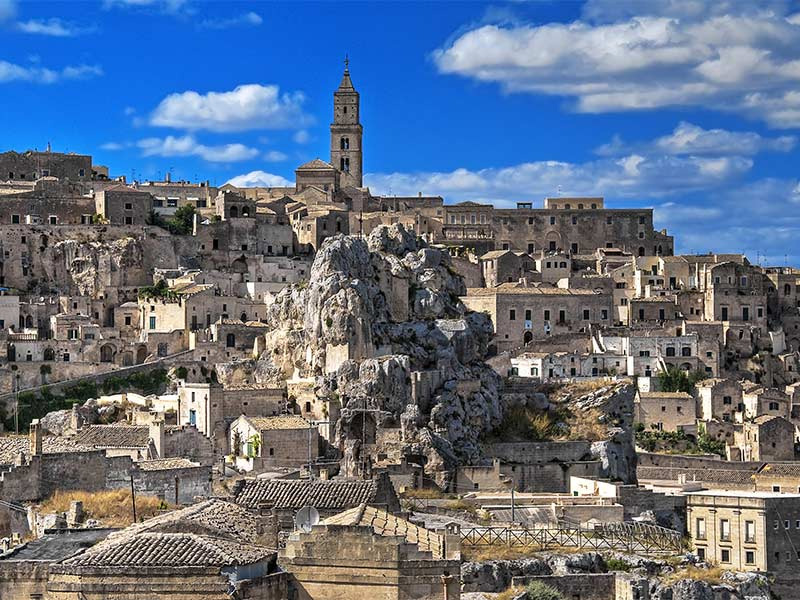
DAYS 4 & 5– ALBEROBELLO & MARTINAFRANCA
The Trulli are famous worldwide for their beauty and unique characteristics and represent one of the most extraordinary examples of Italian folk architecture. They were built in a particular historical period when the construction of stable dwellings was highly taxed; the region's inhabitants thus boasted a great capacity to adapt and an exceptional cleverness in coming up with the Trulli, temporary houses built with the local stone. From precariousness to stability - the process of transformation and recovery and the deference to the originality of the work earned the Trulli of Alberobello their recognition as a World Heritage Site.
In Alberobello, the capital of the Trulli, each Trullo has a different shape and size. Unique constructions are sometimes combined in a complex of communicating houses, while others are built on two levels. Most feature a grey cone-shaped roof, ending with a sphere or hemisphere shape. The interior, arranged as a single chamber, comprises niches for a fireplace, bed and furniture. The structure assures excellent indoor climate control: cool in summer and warm in winter!
Martina Franca is a charming baroque town 400 metres above sea level. The era of greatest splendour for this city was undoubtedly the 18th century when the most important monuments and churches still dominating the historic centre were built. Baroque is the predominant style; it can be seen in many buildings, and in this city, it has taken on characteristic connotations that distinguish it from the other variations of this artistic and architectural current; in fact, we speak of “Martinese” Baroque.
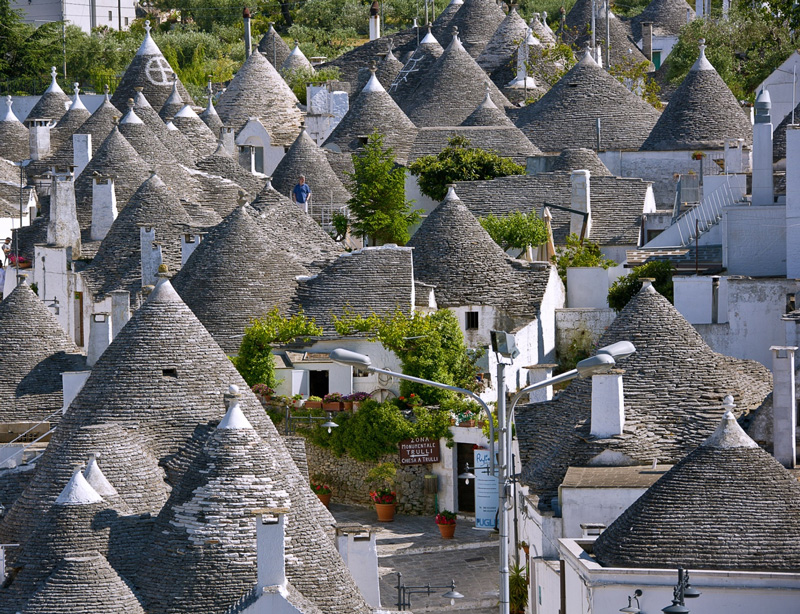
DAY 6 – LECCE
Lying on a plain at the foot of the Salento Plateau is Lecce - the "Florence of the South" - one of the most exciting cities in the region for its architecture, typical of the 17th century.
Of ancient origins, the city experienced two distinct periods of prosperity: the Roman era and the Kingdom of Naples. Under both, the construction of buildings, monuments and mansions increased heavily. These new structures were characterized by magnificent and rich ornamentations that earned this typical architecture the definition of “Leccese Baroque". The imaginative and meticulous sculpting work was facilitated by the fact that the local stone is flexible and easy to inlay. A visit to Lecce can begin with Piazza Duomo, once used as a fortress and today considered the most elegant "salon" in the city. The grandeur of the Duomo, the work of Zimbalo, Cino and Penna, the five-story-tall bell tower, the Palazzo Vescovile (Bishop's Palace), and the Palazzo del Seminario (Seminary) mark the perimeter of the square, one of the monumental works that best represent the magnificence of Lecce’s style.
Not far away, Piazza Sant'Oronzo narrates the city's entire history. The Roman period is visible in the ruins of the Amphitheatre that becomes the exceptional stage for theatrical performances in the summertime, and in part by the high Column - on which stands a bronze of St. Orontius, depicted in the act of blessing - erected in the 17th Century utilizing some of the Roman columns positioned on the Ancient Appian Way. Palazzo del Seggio, known as the "Seat," hosting important art exhibitions, and the Church of Santa Maria delle Grazie, with its interesting frescoes and works sculpted in wood, are the very symbols of the Apulian Renaissance.
Not to be missed is a visit to the Basilica di Santa Croce, where the inspiration of master masonry is visible in every part of the monumental façade that anticipates the beauty of its interior, a harmonious balance between the sobriety of the classical style and the splendour of Lecce's Baroque.
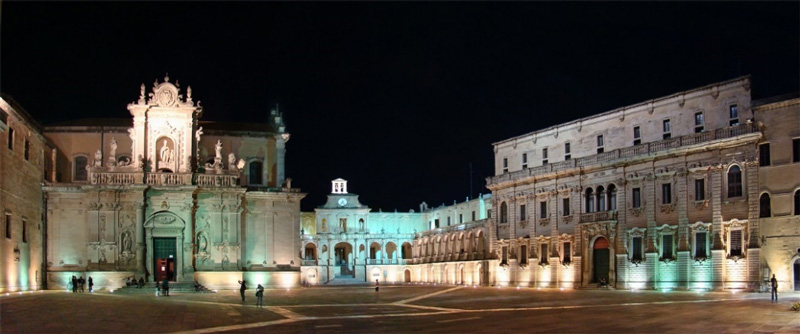
DAY 7 - SALENTO
The tour is over, but the memories of a fantastic journey will accompany you for a lifetime!
Arrivederci for another tour with VITOR, Visit Italy on the Road.
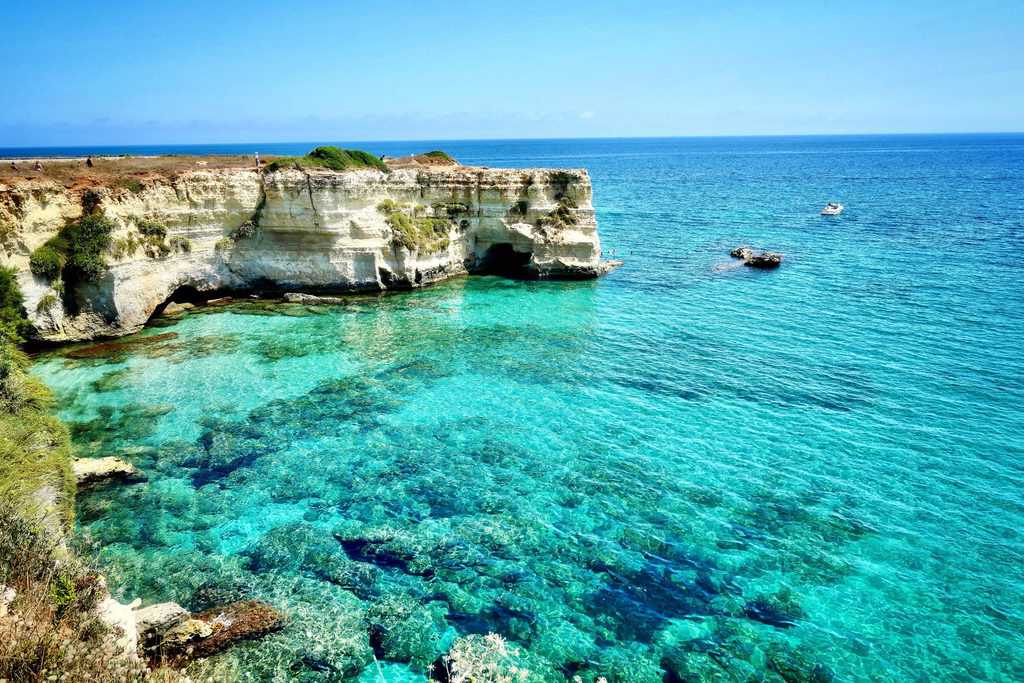
SUMMARY
- 5 Full Days + 5 Nights
- Type of Tour: Circular
- Start and End in: Milan
WHAT'S INCLUDED:
- 5 nights with European Breakfast
- 2 3-course dinners (wine not included)
- Private transportation in a comfortable air-conditioned van
- Transfer by boat to Portofino and Abbazia di San Fruttuoso
- Admission to all locations mentioned
- All taxes and tips